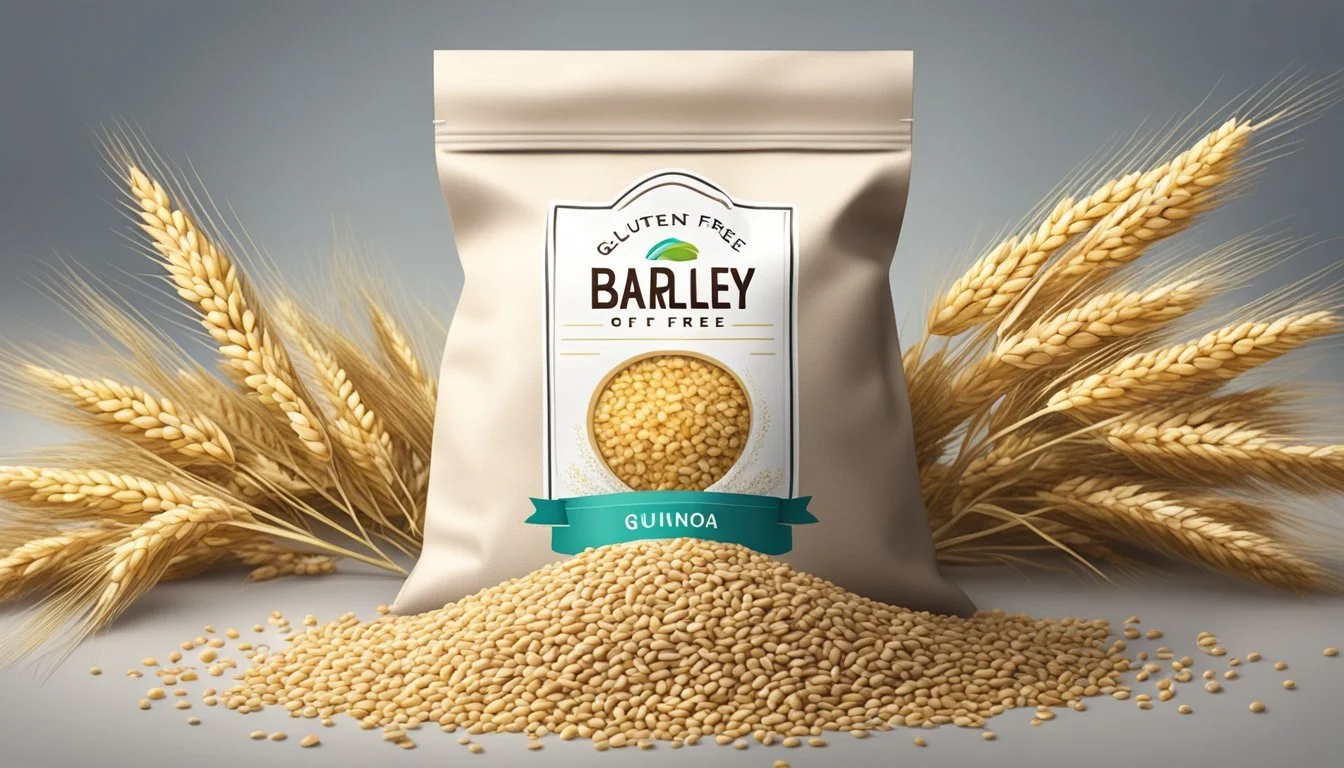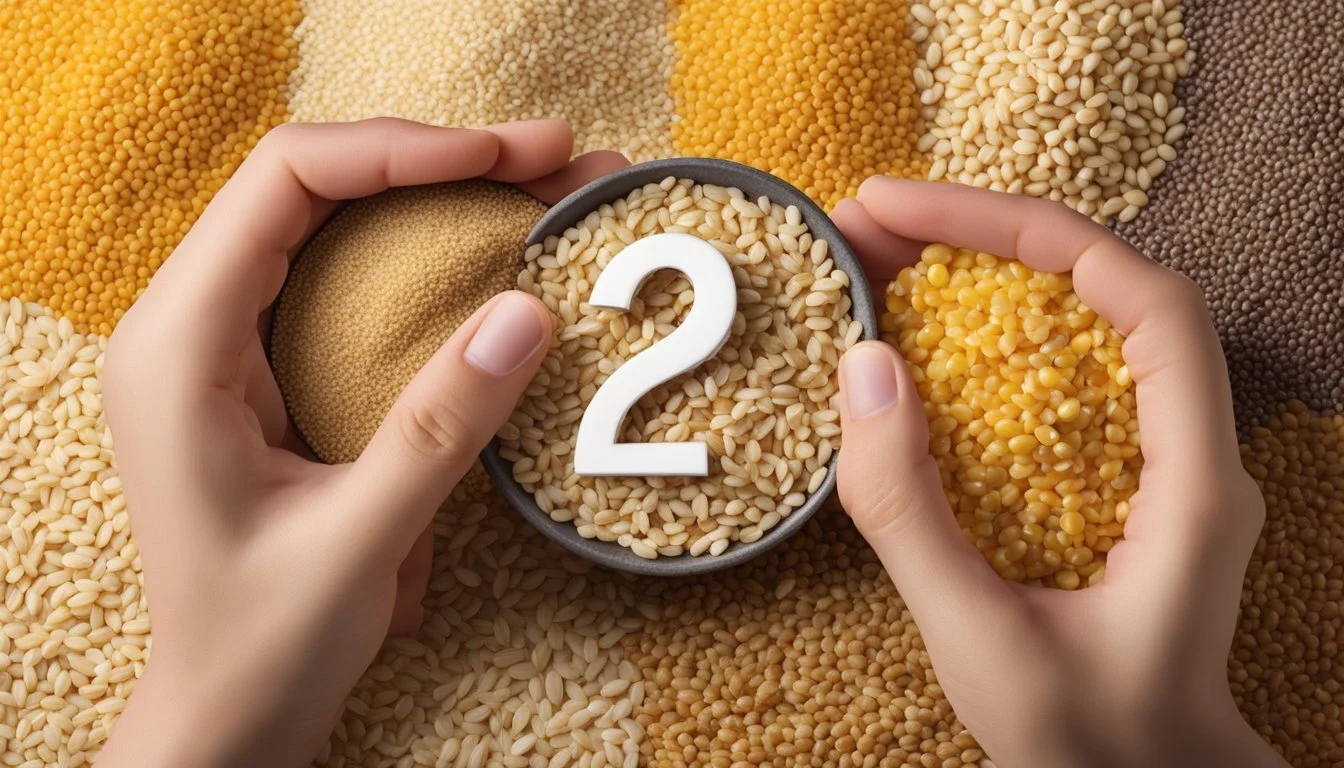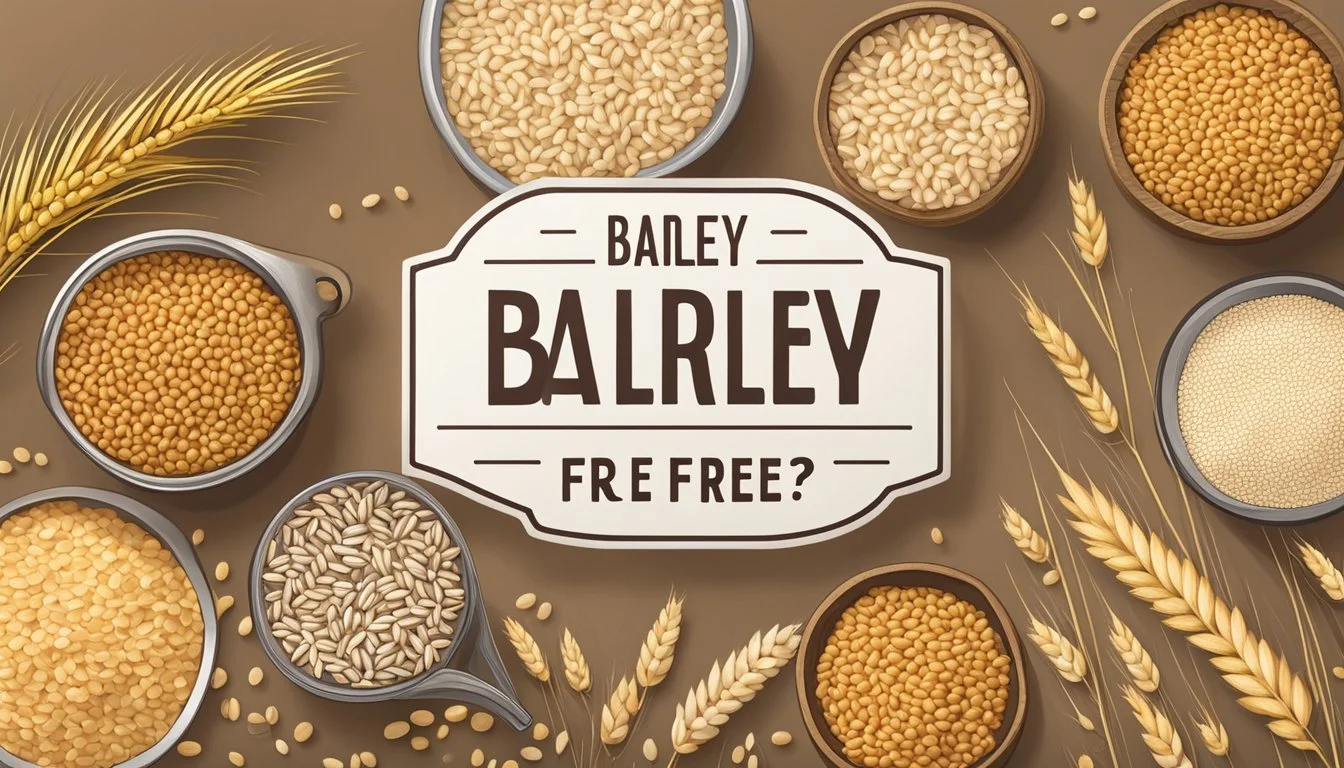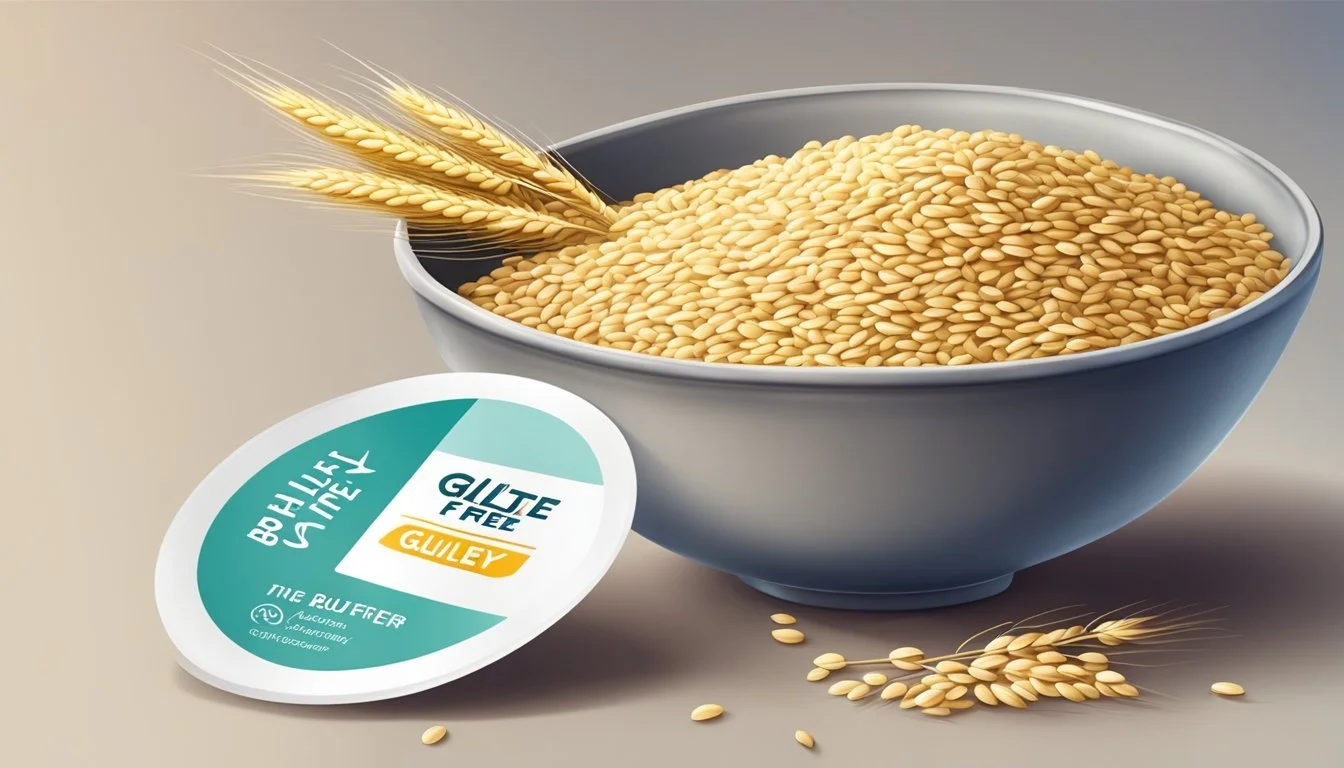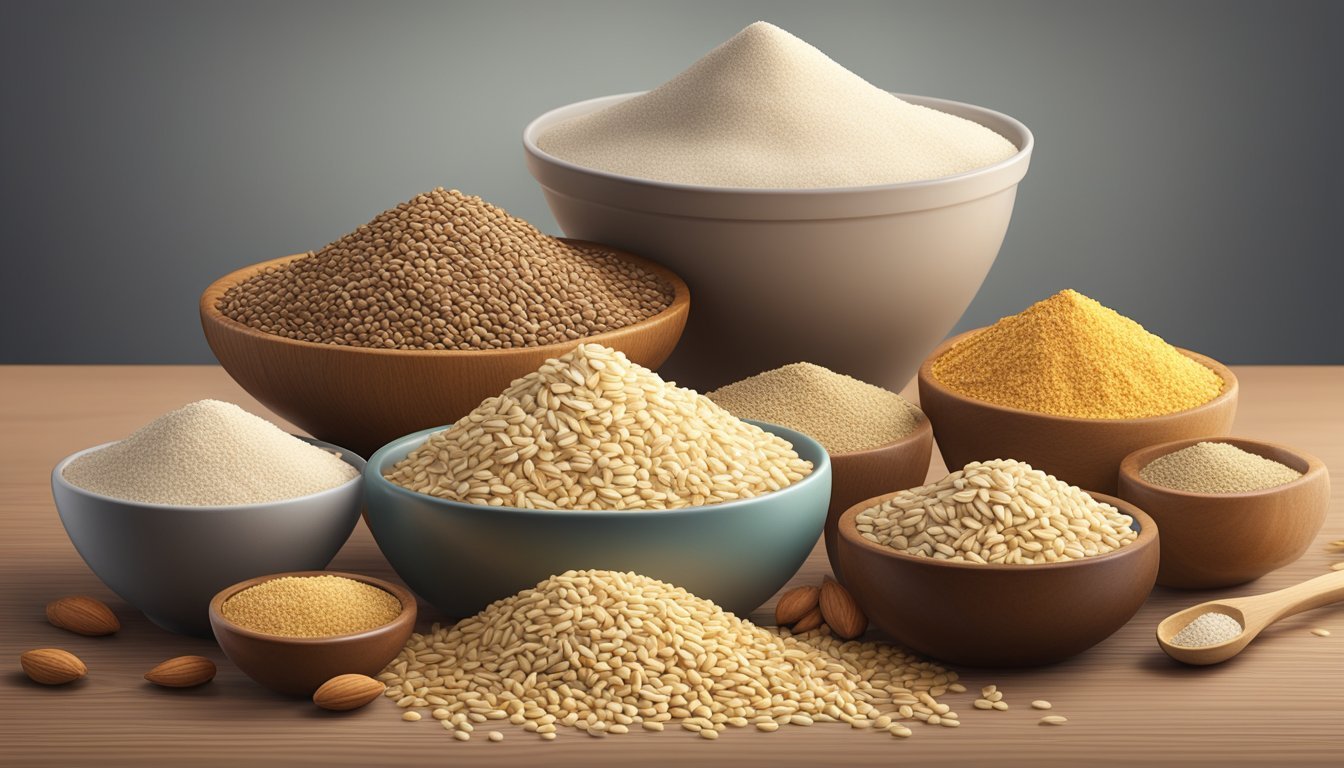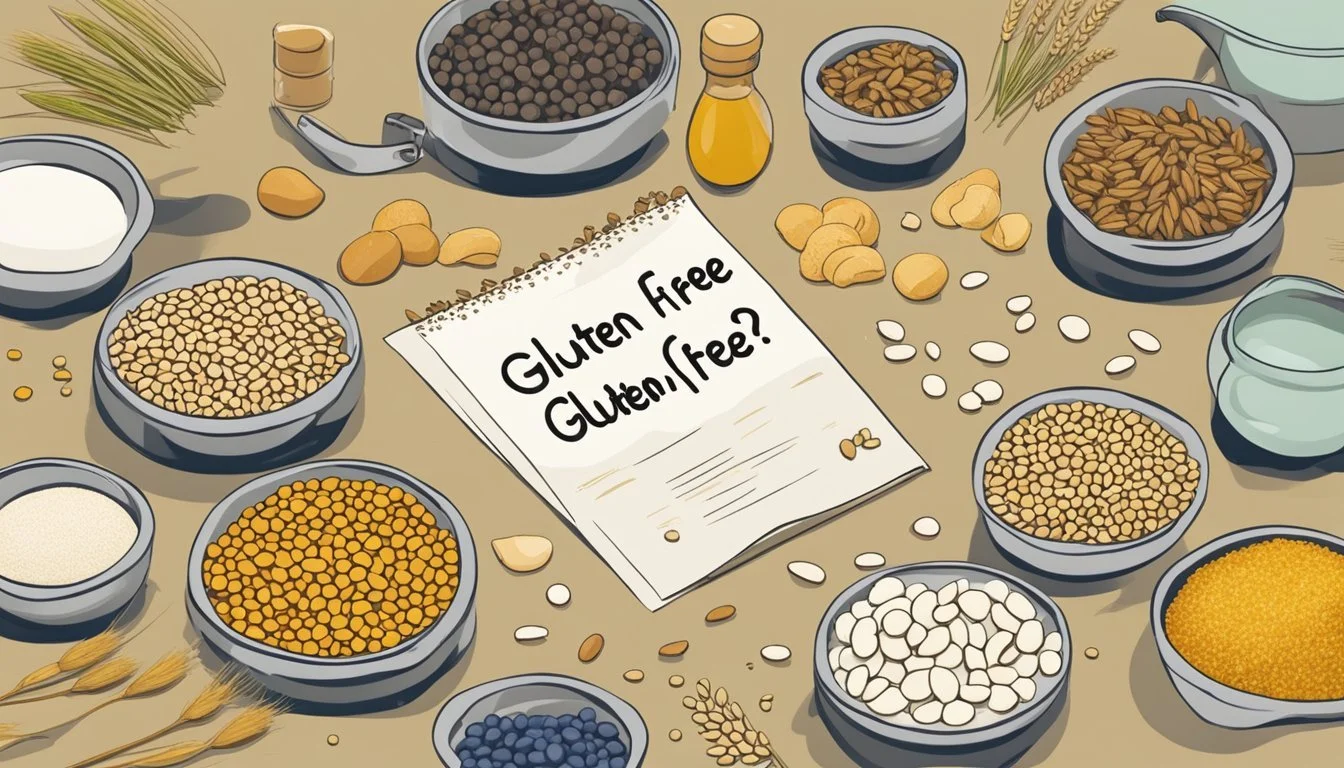Is Barley Gluten-Free?
Uncovering the Truth About This Grain
Barley is a widely-consumed cereal grain known for its robust, nutty flavor and chewy texture when cooked. Its applications range from being a hearty addition to soups and stews to serving as a staple grain in various cultures. Barley also plays a crucial role in the brewing industry, where it’s malted to produce beer.
Despite its nutritional benefits and versatile use, barley contains gluten, a protein that provides elasticity and a chewy texture to bread and other baked goods. Gluten is also present in wheat and rye, making these grains unsuitable for those with celiac disease or gluten sensitivity. When adhering to a gluten-free diet, individuals must avoid barley in all its forms – whether whole, malted, or as an ingredient in processed foods – to prevent adverse health effects.
Understanding Gluten
The concept of gluten revolves around its role as a protein composite and its presence in various grains. Identifying which grains contain gluten is crucial, particularly for individuals with gluten-related disorders.
What is Gluten?
Gluten refers to a family of proteins predominantly found in wheat, barley, and rye. Its main proteins are gliadin and glutenin, with gliadin being responsible for most of the negative health effects in individuals with sensitivities. In the context of food, gluten plays a vital role in determining the elasticity and texture of dough, acting as a 'glue' that holds the product together.
Gluten-Containing Grains
Grains that contain gluten are mainly:
Wheat: The most common gluten-containing grain, utilized in a vast range of products like bread, pasta, cereals, and baked goods.
Barley: This grain is often found in malt, food coloring, soups, malt vinegar, and beverages like beer.
Rye: Typically used in rye bread, rye beer, and some cereals.
It should be noted that oats can sometimes be contaminated with gluten during processing, unless they are specifically labeled gluten-free.
Barley and Gluten
The relationship between barley and gluten is crucial for individuals with gluten-related disorders. Barley contains gluten, a protein complex that poses health risks for those with celiac disease or gluten sensitivity.
Is Barley Gluten-Free?
Barley is not gluten-free and contains a significant amount of gluten. Gluten is a mixture of proteins, primarily gliadin and glutenin, found in several grains. Barley has gluten proteins known as hordeins, which are problematic for people with gluten intolerance. For those on a gluten-free diet, it is important to recognize that barley flour, whole grain barley, and barley malt all contain gluten and should be avoided.
Barley Flour: Made from ground barley, this flour is high in gluten.
Whole Grain Barley: While rich in nutrients and fiber, it also contains gluten.
Barley Malt: Often used in the food industry, especially in the production of beer and malted beverages.
Barley's Role in Celiac Disease
People with celiac disease, an autoimmune disorder, must avoid gluten as it damages their small intestine lining. Consuming barley can trigger an adverse autoimmune response because of its gluten content. Malt, derived from barley, is particularly deceptive as it is often found in foods and beverages that may not be immediately recognized as containing gluten.
Gluten Sensitivity is another reason to avoid barley. While non-celiac gluten sensitivity's mechanisms are less understood than celiac disease, individuals with this condition experience distress when ingesting gluten.
In summary, people should avoid barley and its by-products if they have celiac disease or gluten sensitivity due to the presence of gluten, which can cause significant health issues for these individuals.
Gluten-Free Grains
For individuals following a gluten-free diet, identifying grains that do not contain gluten is essential. Grains such as barley, wheat, and rye are sources of gluten and must be avoided. However, several wholesome and nutritious grains remain suitable for consumption.
Safe Alternatives to Barley
When replacing barley, one must consider gluten-free grains that offer nutritional benefits without the risk of gluten contamination. The following are some safe alternatives:
Rice: A staple grain for many cultures, brown rice is a whole grain that retains its bran and germ, providing fiber and essential nutrients.
Corn: Widely consumed around the world, corn is naturally gluten-free and can be incorporated into a variety of dishes.
Sorghum: With a mild, nutty flavor, sorghum is a versatile gluten-free grain that is also rich in antioxidants and can be popped like popcorn.
Buckwheat: Despite its name, buckwheat is unrelated to wheat and is gluten-free. It's commonly used in noodles and pancakes.
Amaranth: A pseudocereal like quinoa, (What wine goes well with quinoa?) amaranth is a gluten-free option packed with proteins and essential amino acids.
Quinoa: Known as a complete protein, quinoa is an ideal substitute for barley, offering a high protein content and a range of vitamins and minerals.
Oats: While oats are inherently gluten-free, it is important to select brands that certify their oats are free from gluten contamination.
Seeds: Seeds such as flax, chia, and sunflower seeds are gluten-free and can be added to meals for additional texture and nutrients.
Millet: This small-seeded grain is gluten-free and provides a host of vitamins and minerals, including magnesium and phosphorus.
Wild Rice: Not truly rice but related, wild rice is a gluten-free grain that can be used as a hearty substitute for barley.
Individuals can incorporate these gluten-free grains and seeds into their diets to maintain a diverse and nutritionally adequate meal plan while adhering to gluten-free guidelines.
Understanding Celiac Disease and Gluten Sensitivity
Celiac disease is an autoimmune disorder, while gluten sensitivity involves an adverse reaction to gluten without the autoimmune component. Both conditions are linked to the ingestion of gluten-containing grains like barley, and they can cause similar symptoms and intestinal inflammation.
Symptoms of Gluten Intolerance
Individuals with either celiac disease or non-celiac gluten sensitivity may experience a range of symptoms upon ingesting gluten. These symptoms can manifest as gastrointestinal issues, systemic complaints, or both. Below is a summary of common symptoms:
Gastrointestinal Symptoms:
Bloating: This refers to the feeling of an unusually full or swollen abdomen.
Diarrhea: Frequent, loose, or watery stools can indicate gluten intolerance.
Abdominal Pain: This can range from mild discomfort to severe pain.
Systemic Symptoms:
Fatigue: A lingering sense of tiredness or lack of energy is commonly reported.
Headaches: Persistent or recurrent headaches may occur.
It is important to note that the above symptoms can also be associated with a variety of other health issues. Therefore, they are not exclusive to celiac disease or non-celiac gluten sensitivity. A healthcare provider should evaluate persistent symptoms to rule out other conditions and to confirm if one's symptoms stem from gluten intolerance.
Diet and Nutrition
Navigating a gluten-free diet requires understanding which foods contain gluten and which provide essential nutrients. This section will focus on the dietary aspect of barley concerning gluten content and nutritional value.
Gluten-Free Diet Basics
Barley contains gluten and is therefore excluded from a gluten-free diet. Gluten is a group of proteins found in certain grains that can cause health issues for individuals with celiac disease or non-celiac gluten sensitivity. A gluten-free diet typically includes foods like fruits, vegetables, meats, and grains that are naturally devoid of gluten.
For those on a gluten-free diet, it is essential to find alternative sources of nutrients that barley and other gluten-containing grains typically offer. Barley is rich in fiber, iron, vitamins, and minerals such as magnesium. Gluten-free grains and cereals can provide similar nutrients.
A gluten-free diet can include the following grains and replacements to ensure adequate nutrient intake:
Amaranth
Buckwheat
Corn (including cornmeal and polenta labeled gluten-free)
Quinoa
Rice
Millet
It is also crucial to check the labels for hidden gluten in processed foods and to use gluten-free alternatives for baking and cooking. Nutrient-dense, gluten-free alternatives can help to provide the fiber, iron, and vitamins that those on a gluten-free diet might miss from excluding barley. In addition to grains, consuming various fruits, vegetables, and lean proteins can help maintain a balanced intake of fat, magnesium, and other minerals necessary for overall health.
Labeling and Food Choices
When selecting foods, especially processed foods, understanding food labels is crucial to avoid gluten. For individuals with celiac disease or gluten sensitivity, accurate labeling can guard against harmful exposure to gluten.
Reading Food Labels Correctly
Individuals must scrutinize food labels to ensure a product is truly gluten-free. The Food and Drug Administration (FDA) has issued regulations defining what constitutes a "gluten-free" product. This term signifies that the food either does not contain any gluten-containing grain (like barley, wheat, or rye) or is derived from a gluten-containing grain that has been processed to remove gluten to a level below 20 parts per million.
Processed foods pose a particular challenge as they may include hidden sources of gluten. It is imperative to look for the "gluten-free" label, but additional vigilance is needed to check for barley and other gluten-containing grains in the ingredients list. Barley may appear under various names, including:
Malt (which is usually derived from barley)
Brewer’s yeast (which may be a byproduct of beer production)
Malt extract or syrup
Malt flavoring
Health-conscious consumers should also note that foods labeled as "wheat-free" are not necessarily gluten-free, as they could still contain barley or other gluten sources.
Moreover, foods such as soy sauce, beer, grain-based spirits, and certain condiments may contain barley as an ingredient. Even if a product is not directly made from barley, cross-contamination is possible, hence products processed in a facility that handles gluten may pose a risk.
For those with celiac disease, it’s essential to consume foods labeled as "Certified Gluten-Free," which indicates that the food product meets strict processing standards to avoid cross-contamination. The certification is given by third-party organizations which test products for gluten content below specified levels.
By consuming only products that are clearly labeled as gluten-free and understanding all possible derivations of gluten on food labels, individuals can make safer food choices and avoid the health consequences of inadvertent gluten ingestion.
Barley in Cooking and Beverages
Barley is widely utilized as a versatile cereal grain in various culinary applications and in the production of alcoholic beverages, notably beer.
Common Uses of Barley in Food
Barley serves as a fundamental ingredient in many food recipes. Its robust texture and nutty flavor make it a preferred grain for soups and stews, providing both satiety and taste. Pearled barley, with its outer hull removed, is commonly incorporated due to its faster cooking time. This form of barley is also used in side dishes or as a rice alternative in pilafs. Furthermore, barley flour can be found in an array of baked goods and cereals, contributing a distinct flavor and dietary fiber.
Soups: Hearty vegetable or beef soups
Stews: Rich, slow-cooked barley stews
Side Dishes: Pearled barley as a nutritious alternative to white rice
Breakfast Cereals: Hot barley cereal bowls
Baking: Barley flour in bread and other baked goods
Barley in Alcoholic Beverages
Barley is a cornerstone in the brewing industry, especially for creating beers and ales. Malted barley provides the essential sugars necessary for fermentation. The process of malting involves soaking the barley, allowing it to germinate, and then drying it to produce malt extract. This extract is then used to brew beer, with varying roasts of barley contributing to the diversity of beer flavors and colors.
Beer Types: Lager, Stout, Ale
Role of Barley: Source of fermentable sugars for alcohol production
Malting Process: Soaking, germinating, and drying of barley to produce malt extract
Flavor Contribution: Different barley roasts offer a range of flavors from light to rich and toasty
Health Implications
Recognizing the characteristics of barley is essential for understanding its impact on health. Barley contains gluten, making it unsuitable for those with celiac disease or gluten sensitivity, but it also offers nutritional benefits that could affect cardiovascular health and chronic conditions like diabetes.
Barley's Health Benefits and Risks
Barley is rich in fiber, specifically beta-glucan fiber, which has been shown to reduce cholesterol levels, thus potentially decreasing the risk of heart disease. The consumption of barley can contribute to improved vascular health and may have a favorable effect on blood sugar levels, important for individuals with diabetes.
However, the presence of gluten in barley presents significant health risks for certain individuals. People with celiac disease or non-celiac gluten sensitivity should avoid barley, as it can cause severe digestive issues and exacerbate their condition.
Barley grass, which is the leaf of the barley plant, is typically gluten-free as it does not contain the seeds of the barley grain where gluten is present. Barley grass is commonly used in supplements and juices, and it is assumed to have various health benefits, including antioxidant effects that might contribute to cancer prevention. Nevertheless, concrete scientific evidence to fully support claims regarding its cancer-preventing properties is limited.
Regular consumption of foods high in dietary fiber, like barley, when they can be tolerated, contributes to maintaining stable blood sugar levels and may assist in diabetes management. However, the emphasis must be on individual dietary needs and any potential autoimmune response to gluten.
Alternatives and Substitutes
For individuals on a gluten-free diet, finding suitable substitutes for barley is crucial to maintain dietary satisfaction without compromising health. These alternatives fulfill similar roles in dishes where barley is traditionally used, from salads and soups to baked goods.
Cooking Without Barley
When cooking without barley, one must consider both the texture and taste that barley typically imparts. Ingredients like sorghum and buckwheat serve as excellent alternatives, offering similar nutrient profiles, including fiber and essential minerals.
Sorghum is a nutritious grain that provides a hearty texture and a mild, nutty flavor. It works well in a variety of dishes, including:
Fluffy side dishes
Salads
Buckwheat has a distinctive taste and is prized for its contribution to health, containing antioxidants and key nutrients such as manganese and magnesium. It can be incorporated into:
Gluten-free pasta
Teff is known for its small size and gritty texture, ideal for providing bulk in soups and stews.
Gluten-free cooking also commonly uses grains like quinoa, millet, and amaranth for their versatility. These grains can replace barley at a one-to-one ratio in most recipes and serve as excellent bases in dishes where barley would typically be expected.
For recipes that call for barley for thickening purposes, such as in sauces or stews, brown rice flour or cornstarch can serve as gluten-free alternatives, offering the desired consistency without using gluten-containing ingredients.
Understanding Food Processing
When examining food processing, particularly with grains such as barley, it is essential to understand the methods and ingredients involved. This understanding assists in determining whether a product can be considered gluten-free.
How Barley is Processed
Barley processing often begins with cleaning and hulling. The grain is then typically pearled to remove the bran and may be further processed to produce various food ingredients such as malt syrup or maltose. During malting, barley is soaked, allowed to germinate, and then dried using a technique that activates enzymes. These enzymes convert the starches in the grain into sugars, including malt sugar, which is then used in brewing and in the production of malt flavoring.
Barley malt can be further processed to create malt vinegar or caramel color, also known as caramel coloring. The caramel color, a common food additive providing a rich, dark hue to various products, is derived from the controlled heat treatment of sugar, which in the case of barley-derived products, contains gluten.
Moreover, processed barley may find its way into foods as a sweetening agent in the form of brown rice syrup, which sometimes uses barley enzymes in its creation. While the syrup itself does not contain barley, the use of these enzymes in processing can lead to gluten contamination. It's imperative for consumers requiring gluten-free options to scrutinize food labels to ascertain the presence of gluten through such indirect means.
Regulations and Standards
Understanding the regulatory environment is essential for consumers who need to manage gluten intake due to health conditions like celiac disease. Both the United States and Europe adhere to strict guidelines for food labeling to protect and inform consumers.
Gluten-Free Regulations
In the United States, the Food and Drug Administration (FDA) sets the standard for what can be labeled as "gluten-free". Foods labeled as such must contain less than 20 parts per million (ppm) of gluten. This threshold is considered safe for most people with gluten-related disorders. The FDA's regulation applies to packaged foods and dietary supplements but does not extend to meats, poultry, certain egg products, and most alcoholic beverages, as these fall under different agencies' jurisdictions.
In Europe, Regulation (EU) No 828/2014 establishes requirements relating to the provision of information to consumers on the absence or reduced presence of gluten in food. European law also follows a similar standard of 20 ppm of gluten for products that claim to be gluten-free.
Barley and the Food Industry
Barley is a gluten-containing grain and is thus not gluten-free. It commonly appears in foods and beverages, including but not limited to malt, which is derived from barley, and as a flavoring, coloring, or stabilizer. When it comes to food labeling:
In the United States, barley-based ingredients may be present in foods labeled as gluten-free if their use does not result in the food containing 20 ppm of gluten or more.
Europe operates under similar standards, requiring that foods containing barley ingredients but labeled gluten-free must not exceed the designated gluten threshold.
Food producers must monitor the presence of gluten and prevent cross-contamination to comply with these regulations, ensuring the safety and proper labeling of gluten-free products.
Miscellaneous Ingredients
When scrutinizing labels for gluten content, it's crucial to consider miscellaneous ingredients that may not overtly list barley. These can exist as additives for flavoring, coloring, or thickening agents, and may be derivatives of gluten-containing grains.
Additional Ingredients to Avoid
Beyond barley, wheat, and rye, a gluten-free diet requires vigilance with several inconspicuous ingredients. Here is a list to guide the informed consumer:
Flavorings and Colorings: These may be derived from barley malt and should be avoided unless specified as gluten-free.
Thickening Agents: Often found in processed foods, these could be sourced from gluten grains. Look for gluten-free labels on products using guar gum or tapioca instead.
Animal Feed: While not a direct ingredient, awareness that animals fed with barley can contaminate milk and eggs with gluten is important.
Nuts: Cross-contamination is a risk if nuts are processed in a facility that also handles barley.
Milk: Flavored milk or milk drinks may contain additives derived from gluten grains.
Eggs: Similar to nuts, eggs are at risk for cross-contamination during processing.
Tapioca: A safe alternative to gluten-containing thickeners, it’s often used in gluten-free recipes.
Medications: Gluten may be present as a binder or filler. Consumers should review medication ingredients or consult a pharmacist.
Careful examination of product labels and direct communication with manufacturers can assist buyers in making safe, gluten-free choices.
Conclusion
Barley is not gluten-free. Gluten, a protein composite, is naturally present in barley and can range from 5 to 8 percent of its composition. People with celiac disease or non-celiac gluten sensitivity should avoid it, as consuming barley could trigger adverse reactions. Barley's gluten content makes it unsuitable for a gluten-free diet.
When adhering to a gluten-free diet, individuals must read food labels meticulously. Legislations on food labeling help by mandating clear indications of allergens, but it remains imperative for consumers to be vigilant. Foods made with barley, including but not limited to malt, certain soups, and beverages like beer, are typically off-limits.
For those requiring gluten-free alternatives, a variety of options exist that can replace barley. Grains like quinoa, rice, and buckwheat serve as excellent substitutes. These gluten-free alternatives provide similar nutritional benefits without the gluten protein that causes health issues for those with sensitivities.
In recipes where barley is listed, individuals on gluten-free diets should seek alternative ingredients. By doing so, they can enjoy similar dishes without the health risks associated with gluten ingestion.
Remember that while products may appear gluten-free at first glance, cross-contamination or inclusion of gluten-containing additives can still occur. Therefore, vigilance is essential to maintaining a gluten-free lifestyle.


